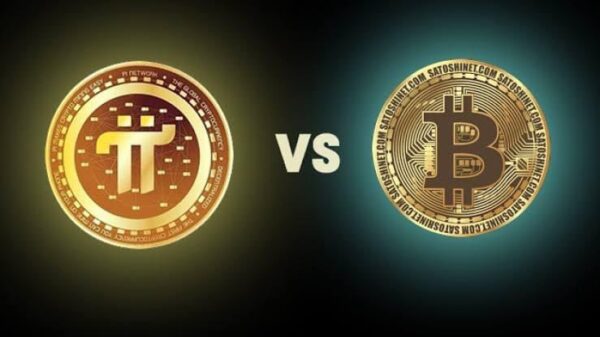Bitcoin has long been the undisputed leader in the cryptocurrency world. Since its inception in 2009, it has revolutionized digital finance, gaining mainstream acceptance as a store of value and investment asset.
However, Pi Network, a relatively new entrant in the crypto space, is positioning itself as a more accessible and user-friendly alternative through mobile mining.
Can Pi Network truly challenge Bitcoin, or is it just another digital currency riding the crypto wave? Let’s analyze the differences and potential of both networks.
Understanding Bitcoin
Bitcoin (BTC) is the first and most valuable cryptocurrency, known for its decentralized nature and proof-of-work (PoW) consensus mechanism.
Key Features of Bitcoin:
- Decentralization – Operates on a fully decentralized blockchain with miners securing the network.
- Limited Supply – Only 21 million BTC will ever exist, contributing to its scarcity and value appreciation.
- Security and Immutability – The Bitcoin blockchain is highly secure, making it resistant to hacking and fraud.
- Institutional Adoption – Bitcoin is widely accepted by institutions, making it a leading investment asset.
- Mining Requirements – Requires high computational power and energy consumption, making it expensive and resource-intensive.
Understanding Pi Network
Pi Network is a cryptocurrency designed for everyday users, allowing them to mine coins using a mobile phone without consuming excessive energy.
Key Features of Pi Network:
- Mobile Mining – Users mine Pi coins on their smartphones with minimal energy consumption.
- User-Friendly Approach – Designed for mass adoption with a simple mobile application.
- KYC Verification – Aims for compliance by ensuring users are real individuals, reducing bot activity.
- Enclosed Mainnet Phase – Currently, Pi Network is in a closed ecosystem, meaning coins cannot yet be traded on exchanges.
- Future Plans for Open Mainnet – The team plans to launch an open mainnet in 2025, allowing Pi to be traded freely.
Pi Network vs. Bitcoin: Key Comparisons
1. Mining Mechanism
- Bitcoin uses proof-of-work, which requires advanced hardware (ASIC miners) and consumes a significant amount of electricity.
- Pi Network enables mining on mobile devices without the need for powerful hardware, making it more accessible.
2. Decentralization and Security
- Bitcoin operates on a fully decentralized network, secured by miners worldwide.
- Pi Network is still in a semi-centralized phase, as the core team maintains control until the open mainnet launch.
3. Market Adoption and Liquidity
- Bitcoin is traded on all major crypto exchanges, with a massive daily trading volume.
- Pi Network is not yet tradeable on open exchanges, limiting its liquidity and market value.
4. Energy Consumption
- Bitcoin mining is energy-intensive, often criticized for its environmental impact.
- Pi Network uses a lightweight consensus model that does not consume excessive energy, making it more sustainable.
5. Store of Value vs. Medium of Exchange
- Bitcoin is widely regarded as “digital gold” and used primarily as a store of value.
- Pi Network aims to become a widely used currency for everyday transactions.
Can Pi Network Challenge Bitcoin’s Dominance?
Pi Network has introduced a novel way to engage users in cryptocurrency by making mining easy and eco-friendly. However, several challenges remain before it can be considered a serious competitor to Bitcoin:
- Market Acceptance – Pi Network needs to gain trust and adoption from users, businesses, and exchanges.
- Security and Decentralization – The open mainnet must prove it can maintain security and true decentralization.
- Value Proposition – Bitcoin’s scarcity and security make it a strong store of value, whereas Pi must establish a solid use case beyond accessibility.
Conclusion
Pi Network presents an interesting innovation with mobile mining, but it still has a long way to go before it can challenge Bitcoin.
Bitcoin remains the dominant cryptocurrency due to its security, institutional backing, and established market position.
While Pi Network offers accessibility and sustainability, its success depends on its ability to deliver on its promises post-mainnet launch.
Pi Network may not replace Bitcoin, but it has the potential to carve out its own niche in the cryptocurrency ecosystem.
Also Read

